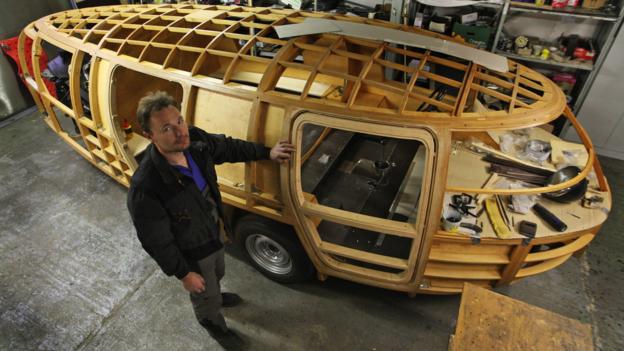
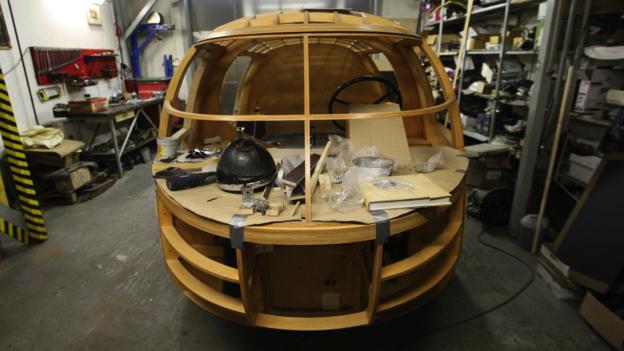
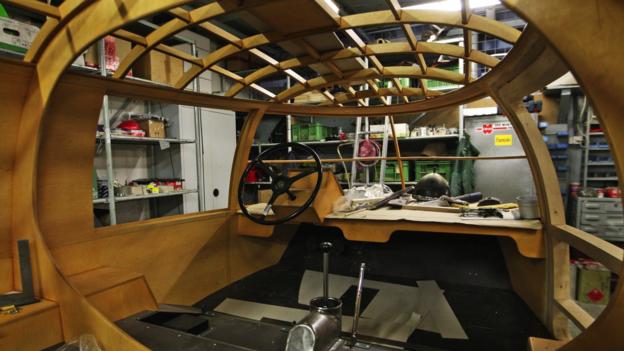
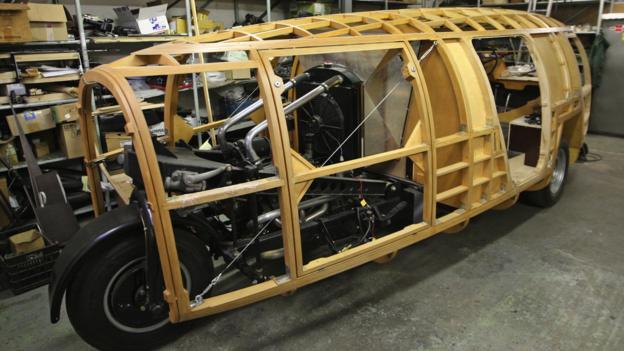
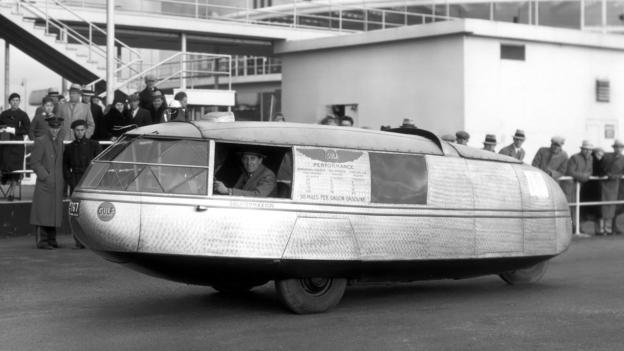
Some concept cars influence decades of automotive engineering. Some concepts never catch on. Some simply catch fire.
The Dymaxion car, designed by the visionary US architect and all-round polymath R Buckminster Fuller, may be the rare prototype for which all of these things are true.
“It’s full of unique and different technologies,” says Jeff Lane, director of the Lane Motor Museum in Nashville, Tennessee. “It was a failure commercially, but it tried lots of different things that have had big influence on car design.” It was a big enough influence on Lane that, 80 years later, he’s in the final stages of recreating Fuller’s first prototype.
When the first zeppelin-shaped vehicle debuted in 1933, it broke every automotive design convention save the use of round wheels. Nearly 20 feet (6.1 metres) long, it could transport 11 people and return 30mpg thanks to wind-tunnel-tested aerodynamics and lightweight aluminium-skin construction. Its engine was rear-mounted but powered the front wheels, and it was steered with a single back wheel, a less-than-intuitive arrangement that may have contributed to a fatal crash that occurred during its demonstration at the 1933 Chicago World’s Fair.
In Fuller’s lifetime, three Dymaxions were built. The first – the one that crashed – later burned. No 3 was sold for scrap sometime in the 1950s. The lone surviving original ( No 2) was abandoned to a farmer’s barn before ending up at the National Automobile Museum in Reno, Nevada. A fourth car, based on the badly damaged second car, was completed in 2010 by British architect Norman Foster, a onetime acolyte of Fuller.
Lane’s model is a recreation of the very first prototype, which had one door, no moving windows and a single headlight. Lane and his team of designers analysed photographs and news reports, bills of materials and 80 different drawings made for the manufacturing process. “We’ve got plans for 12 different swing arms, and some drawings have no numbers so we don't know which prototype they belong to,” says Lane. He has discovered details missing from the No 4 recreation, among them a work order for a belly plate, something he believes the streamline-obsessed Fuller wouldn’t have omitted from the design.
“We’ve been at this for four years,” Lane says. The chassis was built in Pennsylvania, and running gear was further refined at the Lane Museum. Then the car was sent to the Czech Republic where the wooden frame and aluminium skin were fabricated by an expert in World War I-era aircraft restoration. The car is being finished in the Czech Republic by Eccora, a coachbuiding and restoration firm.
“Fuller was not a car designer, but more of a tinkerer and a marketer,” notes Lane. The first assertion is obvious from the continual evolution of plans for the Dymaxion. The second is clear from Fuller’s claims that the car could reach 120mph (193kph) – though the 1933-4 Ford flathead V8 engine and its unmodified differential would have limited it to 75mph on the top end.
Lane drove the chassis around for testing (at nowhere near its projected top speed) during an early phase of the reconstruction. Trying to merge onto a roadway posed a particular problem. “You’ve got to start steering before you start moving, and that tail tends to move into the other lane,” he said, adding that it was a bit like driving a 20ft-long forklift.
Lane hopes to be driving the finished Dymaxion in Tennessee in late 2014.
By the way our shop obd2works, as a professional auto diagnostic tools online supplier, providing our customers with a vast range of high-quality and affordable automobile maintenance tools .Our main business line covers: Automotive Professional Diagnostic Tools for OBD I and OBD II compliant vehicles; Auto Diagnostic tool, OBD2 Code Scanners, ECU Chip Tuning Tool, Car Key programmer Mileage Programmer as well as other more featured products.
No comments:
Post a Comment